Ranked: The largest empires in history
Relics of empire

Stock Montage/Getty Images ; Niday Picture Library/Alamy
For as long as humans have lived in settled communities, some groups have sought to assert dominance over others, and through history the biggest empires grew to cover millions of square miles. But which were the largest? According to WorldAtlas, these were the biggest empires (by area) ever put together, ranging from vast confederations on the Asian steppes to colonial projects that spanned the globe.
Read on to discover the lives and legacies of history's 12 largest empires...
12th: The Empire of Japan, 2.86 million square miles

Pump Park Vintage Photography/Alamy
In the early 19th century, Japan was a feudal society ruled by the Tokugawa Shogunate, which enforced a closed borders policy that shut Japan off from the rest of the world. In 1853, this policy ended abruptly when four American ships sailed into Tokyo Bay and forced Japan to open trade negotiations at the point of a gun.
Centuries of isolation had left Japan technologically and economically unable to compete with the world’s great powers. Something had to change, and in 1868 the Meiji Restoration replaced the decaying shogunate with the Empire of Japan – a constitutional nation state that modernised and industrialised at a remarkable rate.
12th: The Empire of Japan, 2.86 million square miles

CPC Collection/Alamy
Feudal lords and samurai were replaced by bureaucrats, while a universal education system fostered national identity. Imperial ambitions led to the annexation of Taiwan in 1895 and Korea in 1910, while victory against Russia in 1905 signalled Japan’s new status as a world power. The army became increasingly influential – to the point that it could overrule civilian leaders.
This new Japan was an extraordinary piece of nation-building, but it came arm-in-arm with a culture of fierce nationalism and militarism. World War II would see the empire collude with Nazi Germany and attempt to subjugate China – ultimately leading to its destruction.
12th: The Empire of Japan, 2.86 million square miles

SuperStock/Alamy
The Empire of Japan reached its largest extent during World War II after occupying much of Southeast Asia, but the conflict – still just about in living memory – left a deep stain on its reputation. Terrible crimes against civilians in Korea and China (especially the infamous Nanjing Massacre), notoriously brutal prisoner-of-war camps and the mass suicides of Japanese soldiers and civilians have cast long shadows.
After the war – and under American occupation – Japan was legally rewritten for the second time in a century. Demilitarisation, democratisation and a new constitution followed.
11th: The Empire of Brazil, 3.22 million square miles

Buyenlarge/Getty Images
If you’re not well-versed in South American geography, you could easily look at a map of the Empire of Brazil and not notice that it was any different from the modern-day country. The empire was at its largest when it was declared in 1822, as it claimed the modern-day country of Uruguay for six years prior to its independence in 1828. Contained entirely within the 19th century, the Empire of Brazil was not a particularly long-lived dominion and witnessed just two emperors – Pedro I and Pedro II.
11th: The Empire of Brazil, 3.22 million square miles

PRISMA ARCHIVO/Alamy
The empire arose in unusual circumstances. By the early 1800s, Brazil had been a colony of Portugal for centuries, but it became the unexpected seat of the Portuguese dynasty and empire when Dom John VI moved his family and government to Rio de Janeiro after fleeing an invasion of Portugal by Napoleon. John VI later returned to Portugal and named his son and heir Pedro as regent of Brazil, but Pedro promptly declared himself emperor (pictured) and fought a successful war to ensure Brazilian independence.
11th: The Empire of Brazil, 3.22 million square miles

Alfredo Rigaud/Wikimedia Commons/Public Domain
Upheaval in Portugal eventually caused Pedro I to return to the motherland too, leaving his son, Pedro II (centre, top), to rule the enormous and divided empire. A reluctant but capable monarch, Pedro II inherited an empire on the brink of collapse and skilfully shaped it into a stable, emerging power over the course of 58 weary years.
Despite his popularity, he was removed in a military coup in 1889, which replaced the empire with a republic. These days, the imperial era is tarnished by its long association with slavery. It was the last country in the Americas to abolish the practice in 1888.
10th: The Xiongnu Empire, 3.47 million square miles
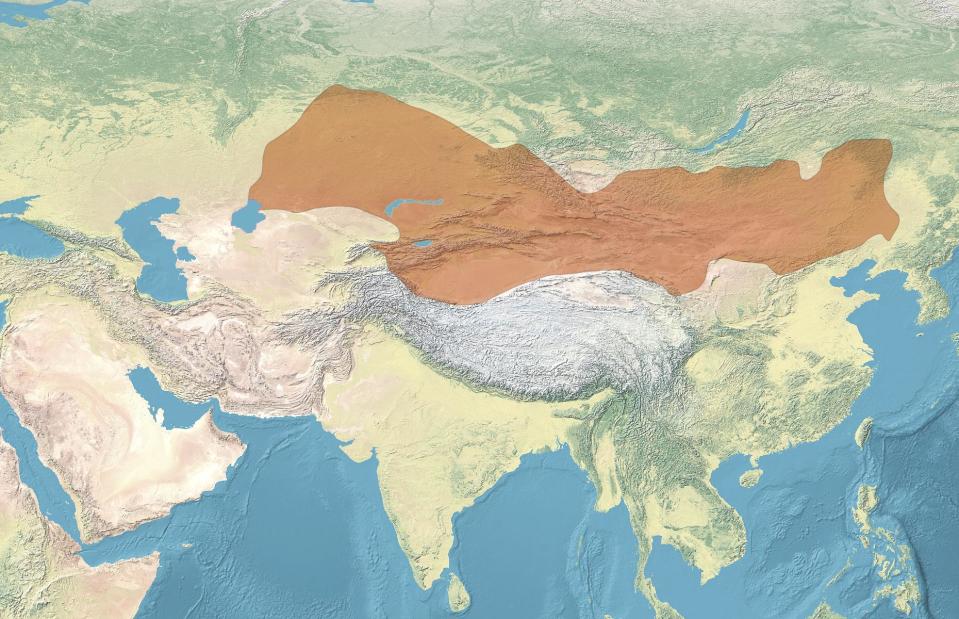
Magnus Rexus Capra/Wikimedia Commons/CC BY-SA 4.0
The Xiongnu Empire formed in Mongolia in the late 3rd century BC and lasted for roughly 300 years. Unlike their contemporaries in ancient Greece and Rome, the overlords of the Xiongnu built a vast empire without a central bureaucracy, cities or mass agriculture.
Instead, the nomadic Xiongnu ruled a confederation of different tribal groups across almost 3.5 million square miles (9m sq km) of grasslands and forest. They were formidable warriors, and their troupes of mounted archers were among the most effective soldiers of their day.
10th: The Xiongnu Empire, 3.47 million square miles
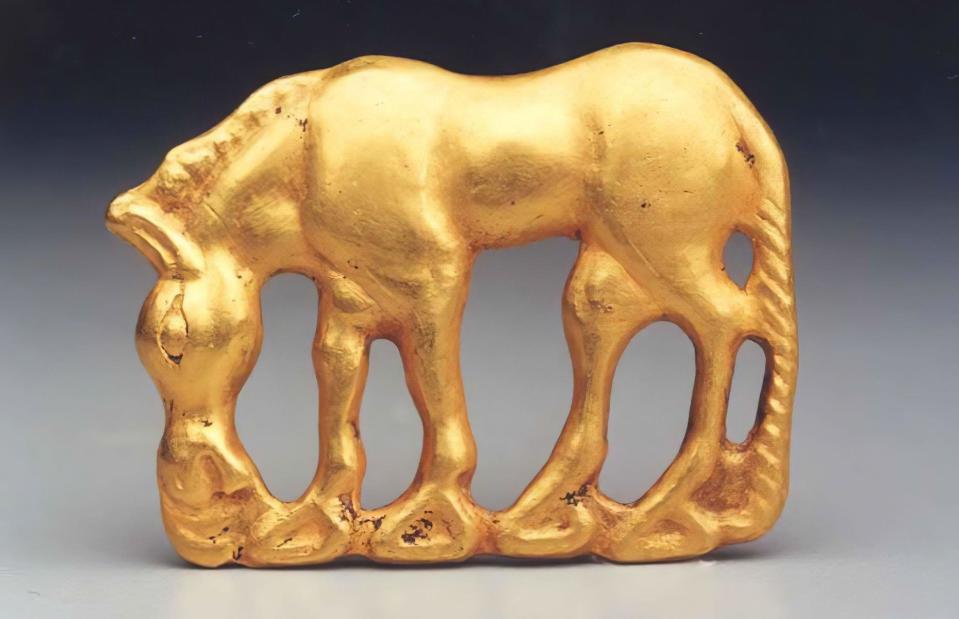
Penta Springs Limited/Alamy
Xiongnu expansion was driven partly by early ironworking, a technological development that gave their warriors access to strong and durable arrowheads, horse tack and carts. They became such a threat that the Han rulers of neighbouring China often decided it was better to bribe them with tributes and marriage alliances rather than face a prolonged war. The Xiongnu carried their wealth with them in the form of valuable artefacts, like this piece of gold in the shape of a grazing horse.
10th: The Xiongnu Empire, 3.47 million square miles
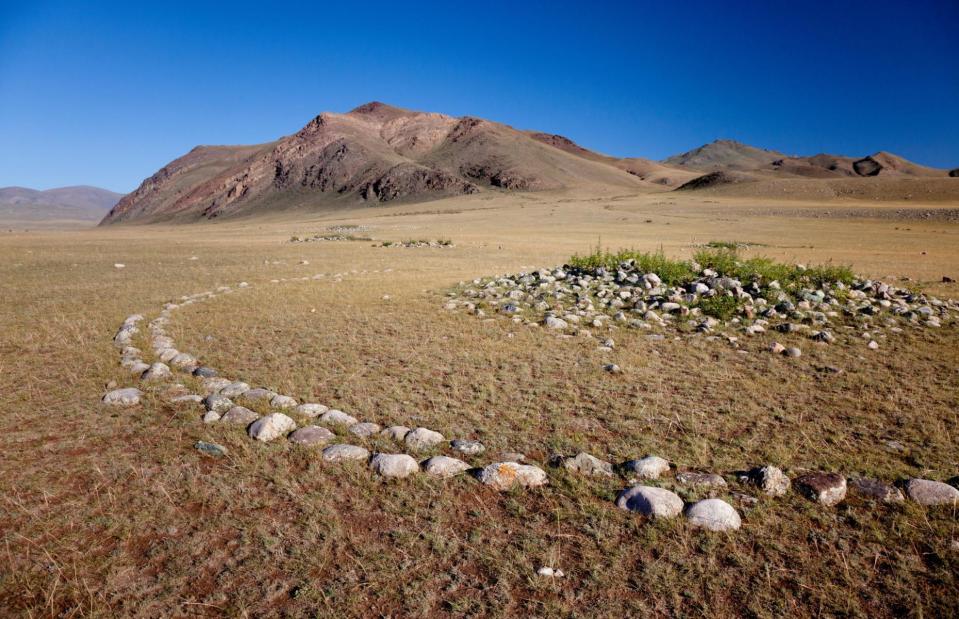
Chester Voyage/Alamy
The Xiongnu Empire was eventually defeated by the Chinese, and disintegrated in the 1st century AD. The empire had already fractured into smaller kingdoms, and assaults by China to the south and other groups to the north pushed the Xiongnu deeper into Central Asia.
Whatever the exact causes of their decline, the nomadic Xiongnu left little evidence for archaeologists beyond tombs scattered across Mongolia, China and Russia. Many are yet to be excavated, and may yield new insights into this little-known people.
9th: The Yuan Dynasty, 4.25 million square miles
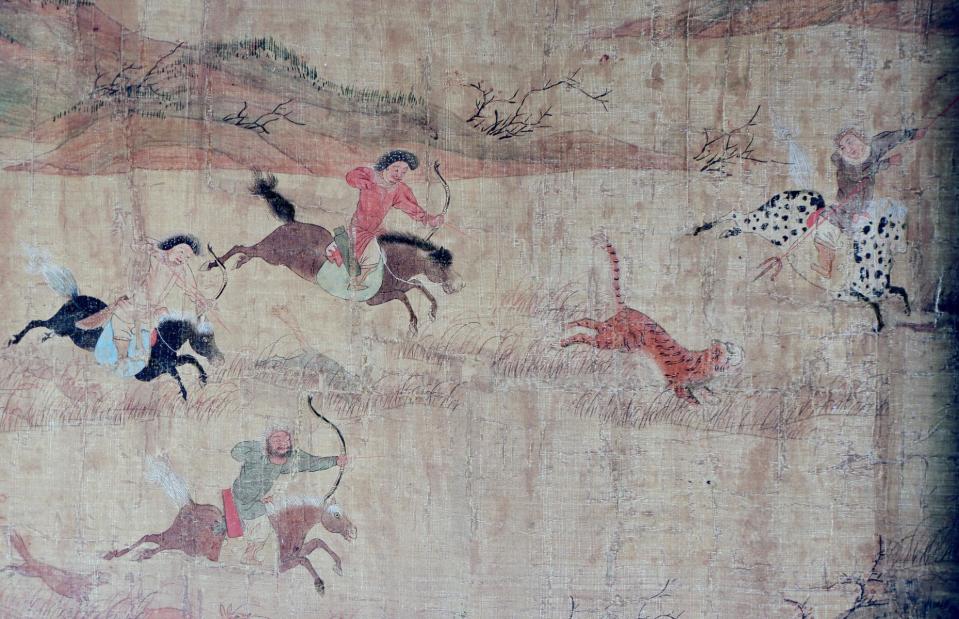
Interfoto/Alamy
The Yuan Dynasty was the first foreign-ruled dynasty in Chinese history, and arose when China was fully conquered by the Mongol armies of Kublai Khan in 1279. During the reign of Kublai the massive and unwieldy Mongol Empire fractured into four parts, and the largest portion – including China – went to Kublai's grandson Temur Khan on his death in 1294. Temur, pictured here hunting, ruled China from Khanbaliq (modern-day Beijing) under the Chinese name Emperor Chengzong of Yuan.
9th: The Yuan Dynasty, 4.25 million square miles

Sam Yeh/AFP/Getty Images
Since the Yuan Dynasty had its origins in the even larger Mongol Empire, it’s no surprise that Yuan-era China saw trade through Central Asia flourish like never before. The Yuan grew rich on exports of fine textiles, ceramics and intricate art pieces like this jade belt ornament.
The emperors improved communication across their domain by building new roads and expanding the Grand Canal that snaked 1,000 miles (1,600km) from Beijing to Hangzhou. Italian explorer Marco Polo visited China at this time, and even served in Kublai Khan's court.
9th: The Yuan Dynasty, 4.25 million square miles
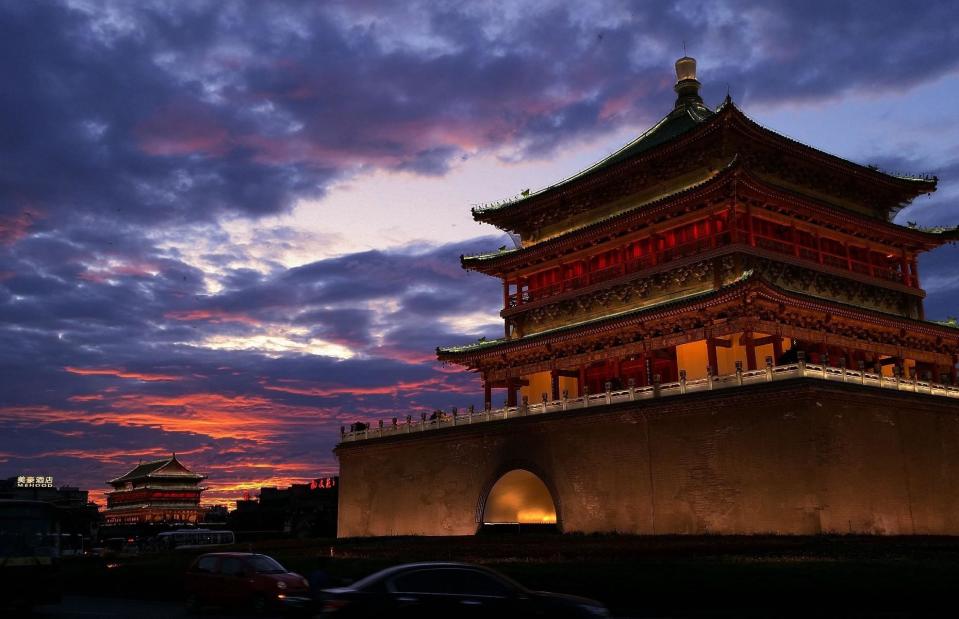
Wirestock Creators/Shutterstock
Although Yuan emperors adopted some Chinese ways, they remained Mongols at heart and never fully assimilated. The Yuan emperors were often uninterested in the day-to-day business of government and rebellion fomented among the Chinese bureaucrats left to do all the work.
A series of revolts in the mid-14th-century led to the overthrow of the final Yuan emperor in 1368, although the dynasty left a long legacy. Many Yuan monuments remain, including Beijing’s Drum Tower and Bell Tower, pictured here.
=7th: The Umayyad Caliphate, 4.29 million square miles
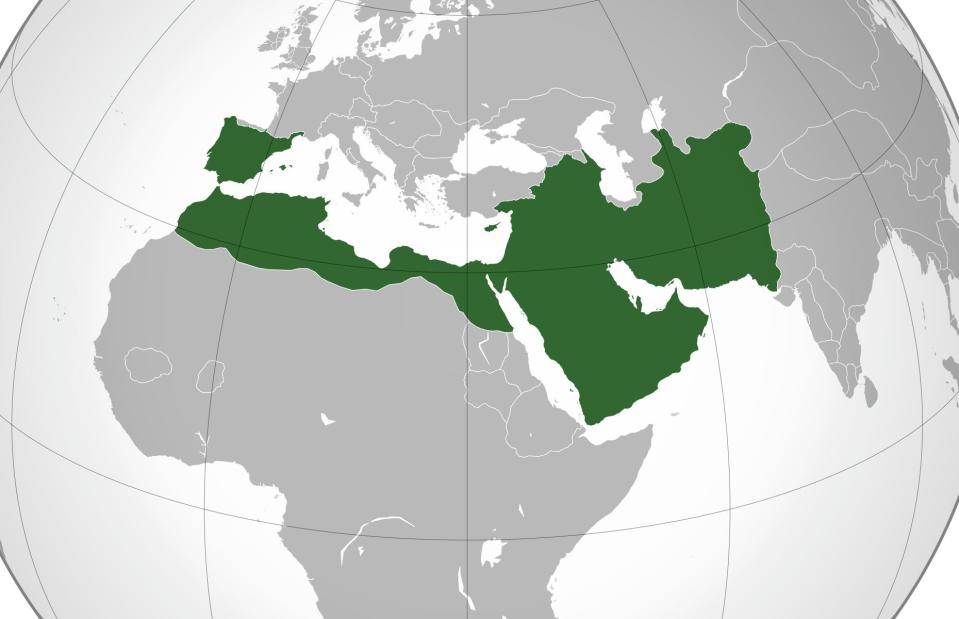
Ergovius/Wikimedia Commons/CC BY-SA 4.0
The Umayyad Caliphate was the second caliphate established after the death of the Prophet Muhammad, and an extremely important force in shaping the early Islamic world. It was founded after Mu'awiyah seized control from Ali, the son-in-law of Muhammad, and established an empire based around his new capital of Damascus in AD 661.
Conquests followed, and by the early 8th century the caliphate had transformed into a multi-ethnic empire that included North Africa and Spain. Christians and Jews were allowed to practice their religions in return for an extra tax.
=7th: The Umayyad Caliphate, 4.29 million square miles
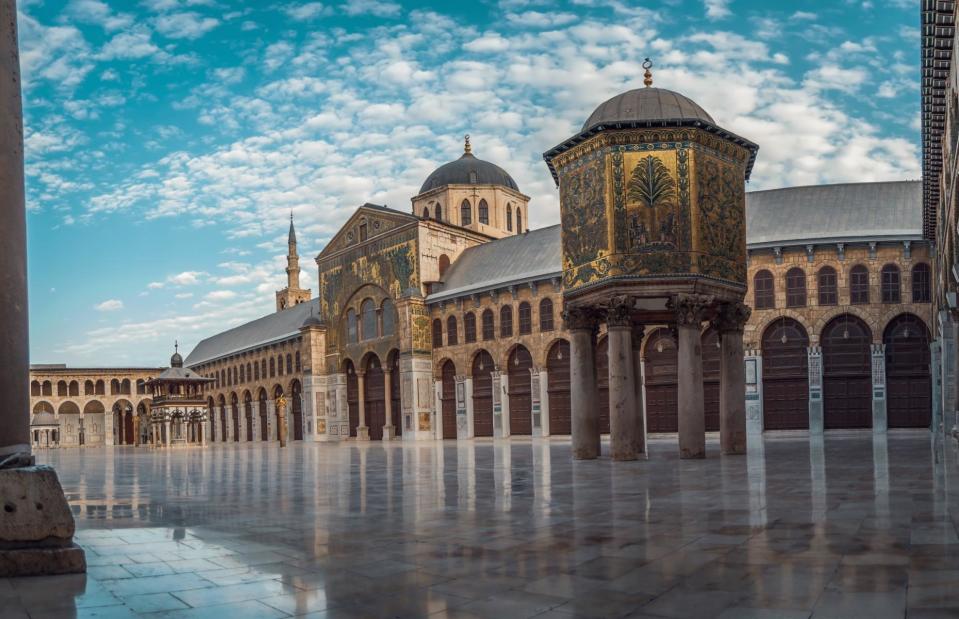
mohammad alzain/Shutterstock
The Umayyad era was a critical period in the development of Islamic art and architecture. Elements of Byzantine and Persian building styles merged with new forms to influence impressive new monuments, including the Dome of the Rock in Jerusalem and the Great Mosque of Damascus (pictured here). Both buildings were constructed on top of old Jewish and Christian sites of worship, although Jewish and Christian craftsmen were often recruited to build them.
=7th: The Umayyad Caliphate, 4.29 million square miles
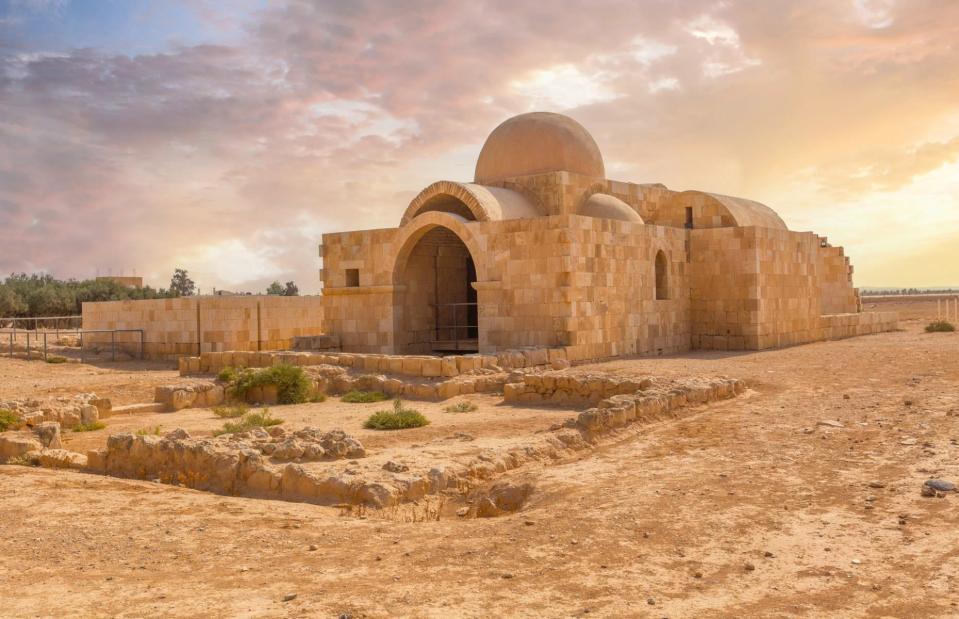
Nataliya Nazarova/Shutterstock
A heavy defeat at the hands of the Byzantines in 717 helped sow the seeds of the Umayyad collapse. Criticism of the ruling dynasty mounted and open rebellions broke out through the 740s.
The Umayyads hastily built desert castles to protect themselves like this one at Qasr al-Hammam al-Sar’h, but after a series of military reversals the last Umayyad caliph was killed in 750. Most members of the Umayyad Dynasty were slaughtered after the overthrow, but one branch of the family survived as rulers of a much-reduced kingdom in Spain.
=7th: The Abbasid Caliphate, 4.29 million square miles
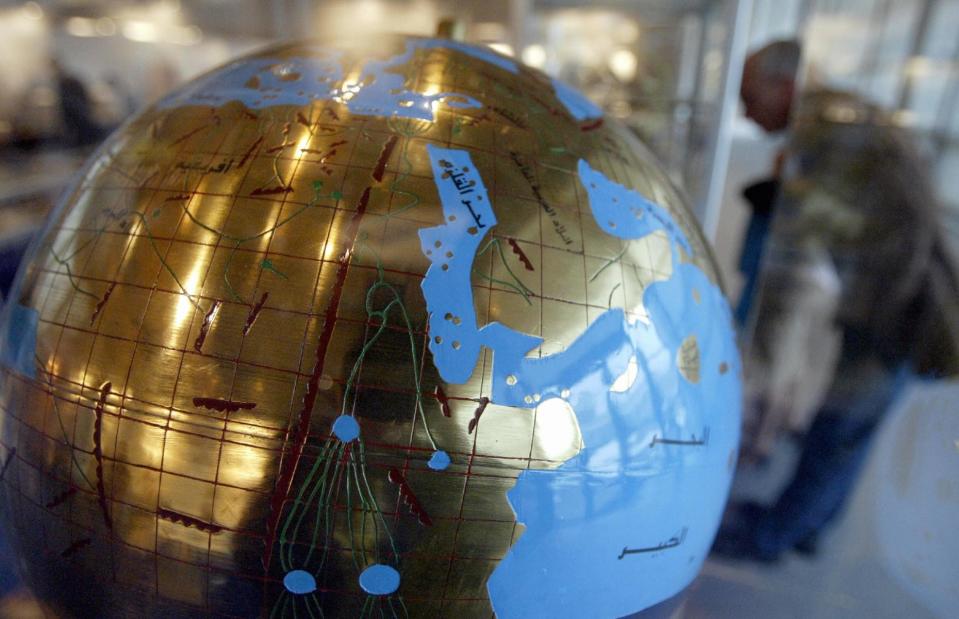
John MacDougall/SFP/Getty Images
The Abbasid Caliphate succeeded the Umayyads after defeating them at the Battle of the Zab, and they stamped their authority on the Islamic world by moving the capital to their power base in Baghdad in Mesopotamia (modern-day Iraq). The empire they inherited no longer included northwest Africa or Spain, but the Abbasids made up for these losses by expanding eastwards. The Abbasid Caliphate peaked at the start of the 9th century, when Caliph Al-Ma’mun commissioned this finely decorated globe to celebrate his conquests.
=7th: The Abbasid Caliphate, 4.29 million square miles

Stephen Chung/Alamy
The Abbasids oversaw a flourishing intellectual scene known as the Islamic Golden Age. Scholars from across the empire flocked to the House of Wisdom, a state-sponsored library in Baghdad.
Scribes translated ancient Roman, Greek and Persian texts into Arabic and perfected their ability to record new discoveries. Muslim doctors researched new ways to treat ailments, while scientists delved into physics, chemistry and astronomy, using inventions like this 9th-century astrolabe to accurately chart the sky.
=7th: The Abbasid Caliphate, 4.29 million square miles
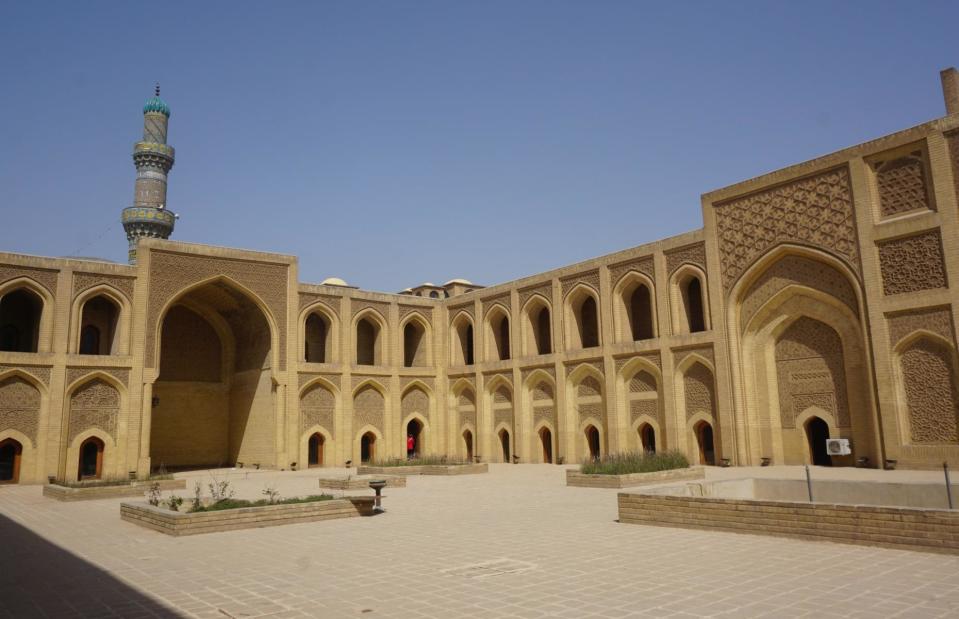
Alex9330/Shutterstock
After 500 years of rule, a weakened Abbasid Caliphate faced a new and implacable foe when Mongol armies exploded from Central Asia, initially under the command of Genghis Khan. After stubbornly defying Mongol threats, Baghdad was sacked in 1258 by a mighty Mongol army that all but obliterated the city, slaughtering the caliph and his subjects with unfettered brutality. Few relics of the Abbasid era survive in Baghdad, although the Mustansiriya Madrasah scholarly complex (pictured) retains its distinctive Abbasid baked-brick vaults and arches.
6th: The Second French Colonial Empire, 4.44 million square miles
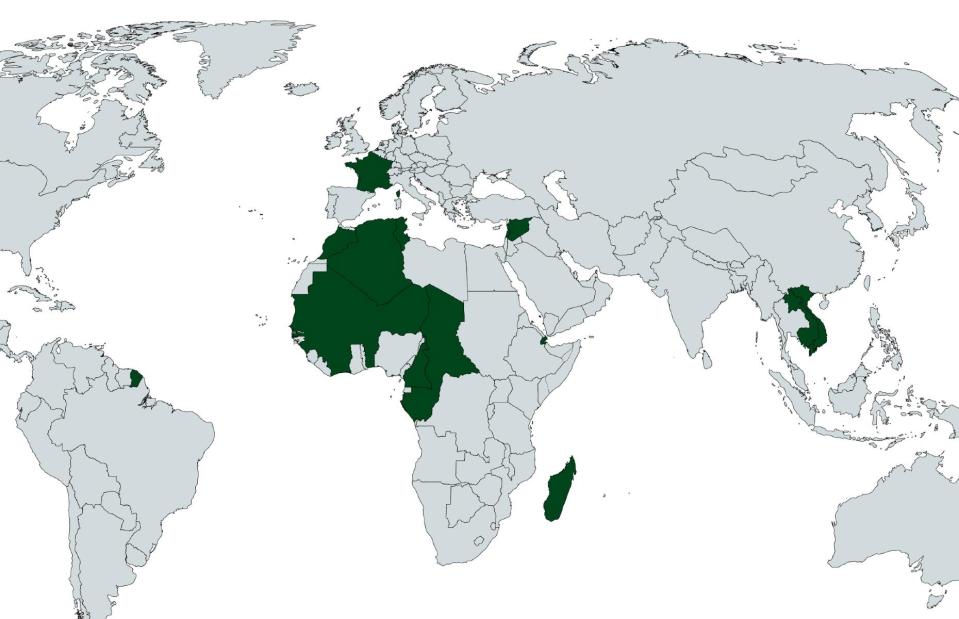
Simonsyo/Wikimedia Commons/CC BY-SA 4.0
France had two bites of the cherry when it came to empire-building. Its North American possessions had already been lost when French leaders began a colonial reboot in the 19th century.
The second time around, the French concentrated on expansion into Africa, Indochina (modern Southeast Asia) and the South Pacific. They redoubled their efforts in the 1870s after the disastrous Franco-Prussian War, and the French Empire reached a peak between the world wars when France took over parts of what is now Syria, Lebanon, Cameroon and Togo.
6th: The Second French Colonial Empire, 4.44 million square miles
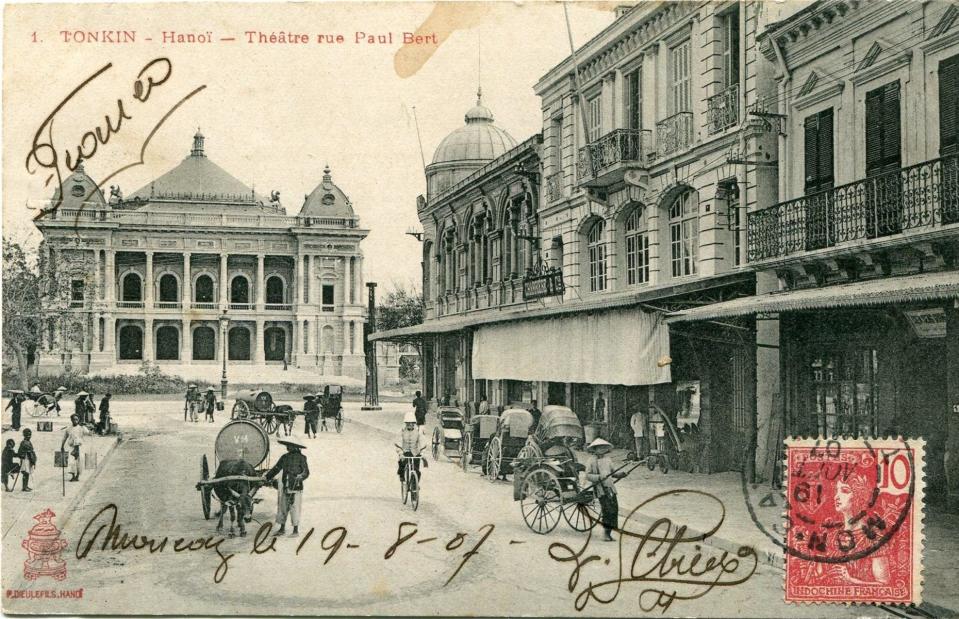
Wikimedia Commons/Public domain
While the First French Colonial Empire saw settlers flock to relatively undeveloped lands, the second batch of colonies focused on already well-established nations.
The French constructed European-style buildings like the Opera House in Vietnamese capital Hanoi, shown here in an early 20th-century postcard. But this cultural exchange was hardly equal. France stripped its colonies of natural resources and seized many treasures including the royal jewels of Madagascar, ritual masks from Senegal and sculptures from Angkor Wat in Cambodia.
6th: The Second French Colonial Empire, 4.44 million square miles
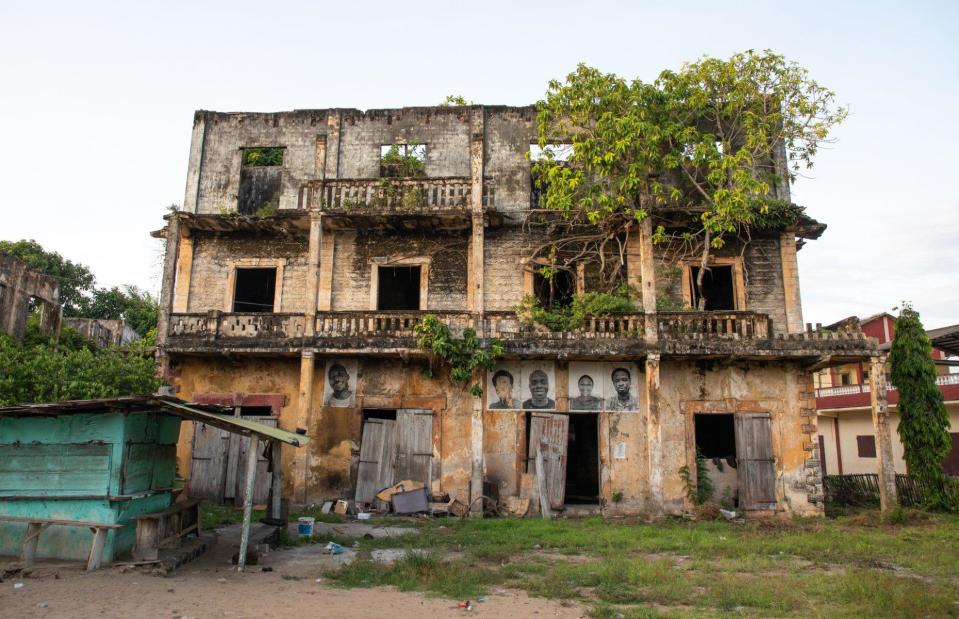
Eric Lafforgue/Art in All of Us/Corbis/Getty Images
France lost direct control over large swathes of its empire during World War II, and many colonial subjects resisted the reassertion of French authority in 1945. The Algerian War of Independence and its accompanying atrocities caused the collapse of the French government in 1958, while the battle for Indochina’s future became a proxy for the Cold War superpowers and led to the Vietnam War. In West Africa, where this colonial building now crumbles, the last remnants of the French Empire declared independence with barely any resistance from Paris.
5th: The Spanish Empire, 5.29 million square miles
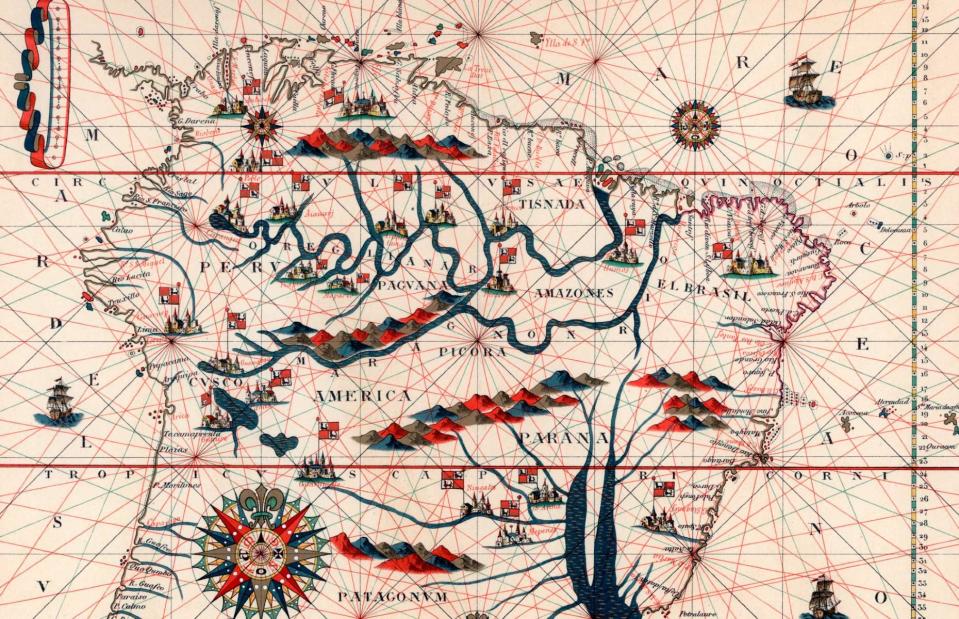
Ann Ronan Pictures/Print Collector/Getty Images
Christopher Columbus' voyage across the Atlantic in 1492 kicked off the Age of Discovery and inaugurated the Spanish Empire. Spanish expansion into the New World came at the point of a gun, a weapon that the Indigenous inhabitants of the Americas had no way to counter.
Spanish conquistadors forced the submission of countless native leaders, including those of the Aztec and Inca civilisations, while European diseases battered their populations. Soon, most of the New World was under Spanish control, as this 1582 map of South America shows.
5th: The Spanish Empire, 5.29 million square miles
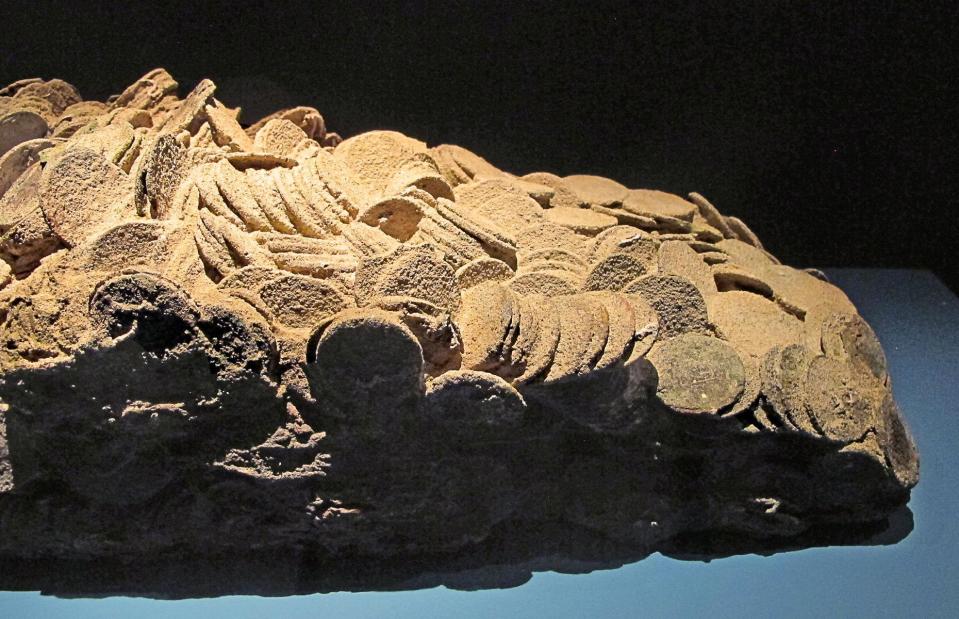
jacinta iluch valero/Wikimedia Commons/CC BY-SA 2.0
The Spanish extracted vast riches from their colonies, and treasure fleets sailed across the Atlantic with holds packed with gold. These ships were tempting targets for hostile nations and pirates, and not every ship made it back to Spain.
The Nuestra Senora de las Mercedes was returning from the colonies in 1804 when a single British cannonball struck the ship’s magazine and condemned 250 Spaniards and 500,000 gold coins to a watery grave. The treasure has since been recovered and is on display at the National Museum of Underwater Archaeology in Cartagena, Spain.
5th: The Spanish Empire, 5.29 million square miles
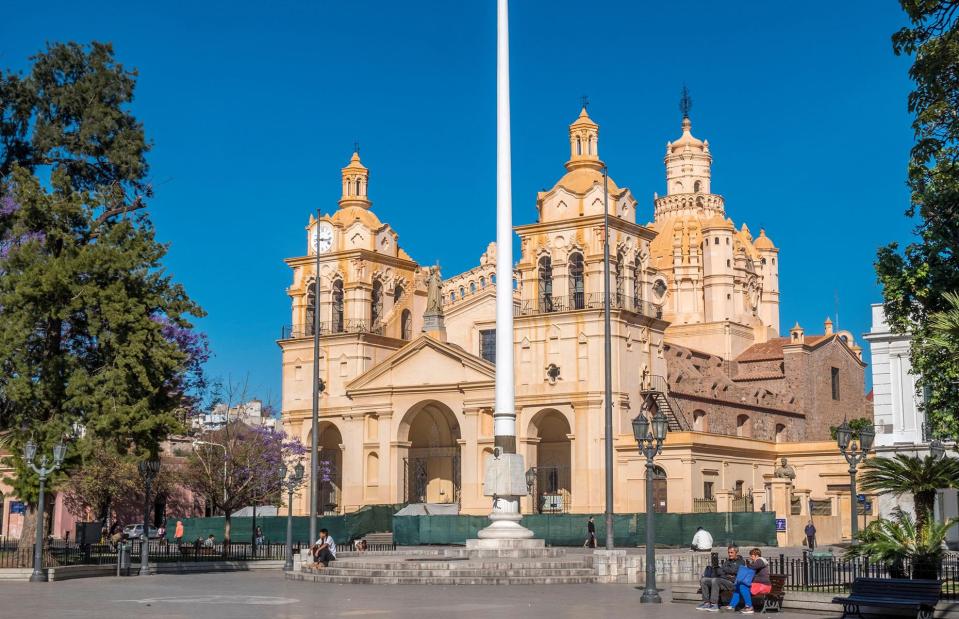
Hemis/Alamy
The Spanish Empire collapsed like a house of cards after Spain was invaded by Napoleon Bonaparte’s armies in the early 19th century. The empire was already facing huge problems, and its South American possessions steadily gained independence from Madrid through the 1810s and 1820s.
But the legacy of Spanish rule is a long one. Spanish is the dominant language of Central and South America, Catholicism is the dominant faith and nearly half the population of South America is of European descent. Thousands of colonial-era churches are still standing, including this magnificent cathedral in Cordoba, Argentina.
4th: The Qing Dynasty, 5.68 million square miles
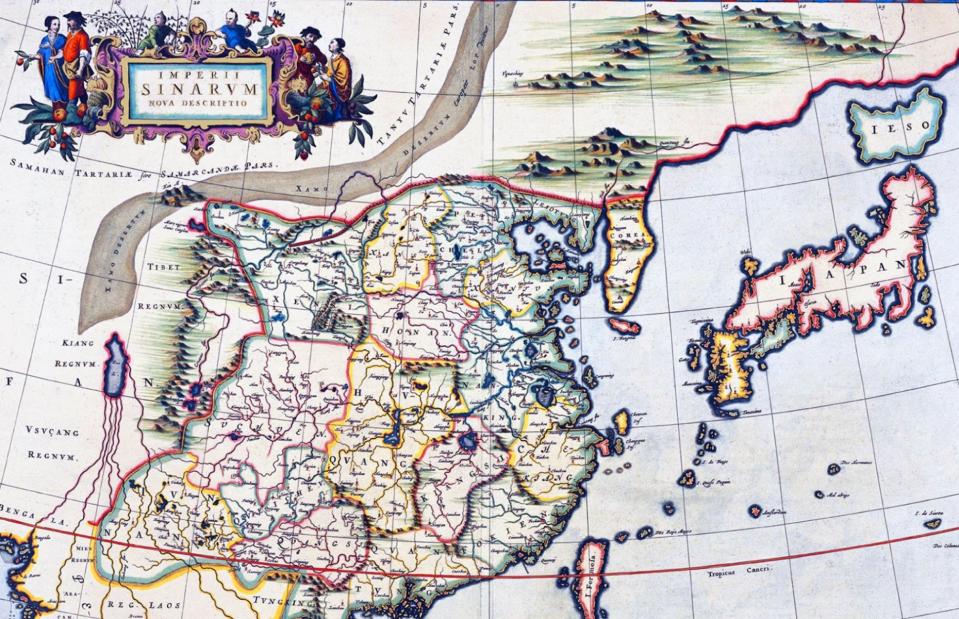
CPA Media Pte Ltd/Alamy
China had already been ruled by emperors for almost 2,000 years when the Manchu people invaded from the northeast and overthrew the Ming Dynasty, capturing Beijing in 1644. The transfer of power to the Manchu ruler, the five-year-old Shunzhi Emperor, began a new era under the Qing Dynasty.
Shunzhi and his successors set about expanding their rule into Outer Mongolia, Tibet and Xinjiang. The Qing Empire reached its greatest extent in 1760 after a series of military conquests under the remarkably long-lived Qianlong Emperor.
4th: The Qing Dynasty, 5.68 million square miles
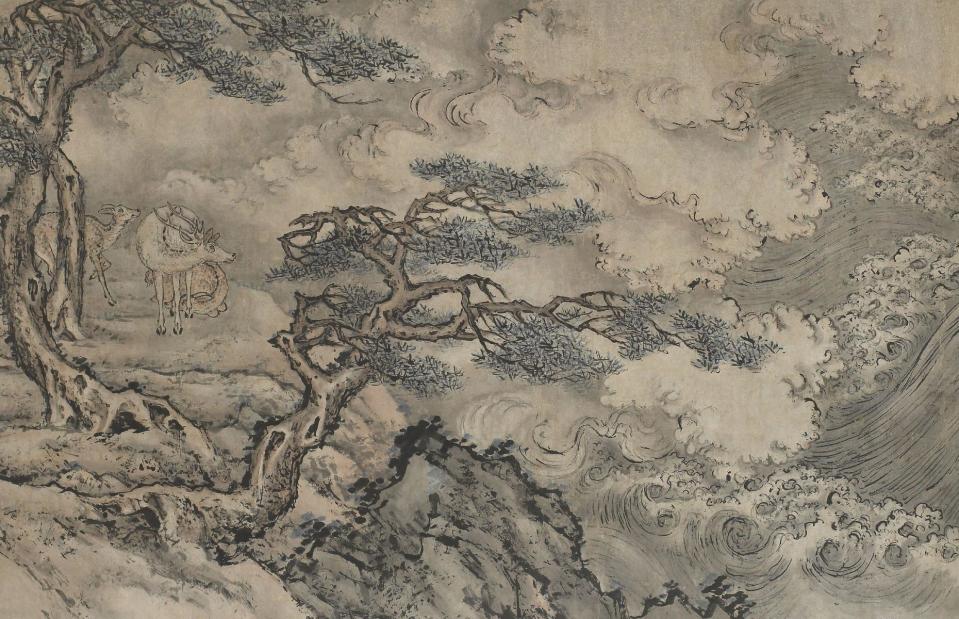
Penta Springs Limited/Alamy
In the areas that were historically part of China, the Qing emperors continued to rule using the long-established state bureaucracy, staffed by educated officials who had to pass exams before they could join the government. Newly conquered areas were controlled separately through local rulers who were granted some degree of freedom.
To keep the two systems separate, migration between old China and the new territories was restricted. At its height, the Qing Dynasty controlled a vast and wealthy empire.
4th: The Qing Dynasty, 5.68 million square miles
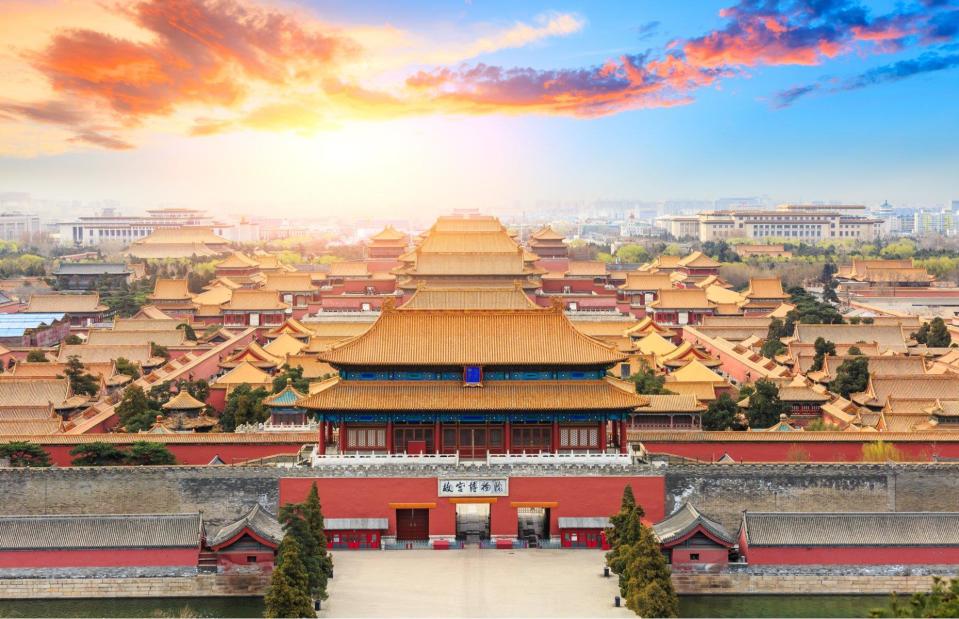
ABCDstock/Shutterstock
The Qianlong Emperor died in 1799, and his successors faced new external enemies in the new century. Colonial powers were now building empires from the other side of the world, and they had ambitions to expand into China.
They forced the Qing to sign a series of humiliating and unequal treaties, which helped cause a series of uprisings that ended with the abdication of six-year-old Emperor Puyi in 1912. The Forbidden City, pictured here, was no longer a royal palace but an empty relic of Imperial China, never to be occupied by an emperor again.
3rd: The Russian Empire, 8.8 million square miles
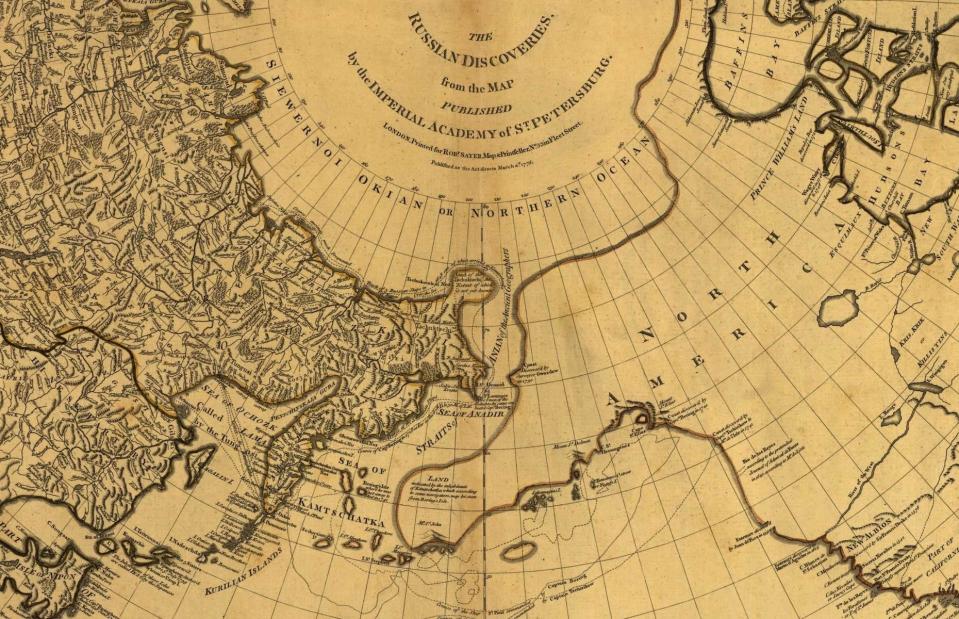
Geography and Map Division/Library of Congress
The Russian Empire was proclaimed in 1721 by Peter the Great, the tsar who transformed Russia from a regional power into an empire at the expense of Sweden in the north and the Ottoman Empire in the south. After that, the Russians began a long trek east, conquering new lands in Siberia and crossing the Bering Strait into North America (as shown in this 1775 map). At its height at the end of the 19th century, the Russian Empire covered roughly a sixth of all the land on Earth and encompassed 125 million people.
3rd: The Russian Empire, 8.8 million square miles
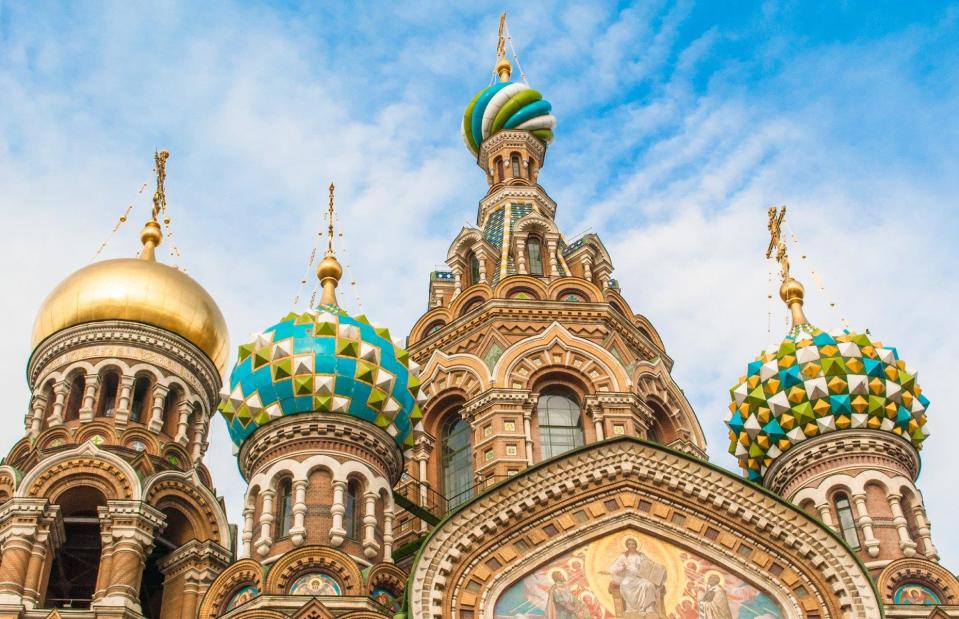
Anton_Ivanov/Shutterstock
The Russian Empire was always an outsider among the great powers of Europe, and not just because of geography. The tsars considered themselves the equals of their counterparts in Britain and France, but they were arguably the last absolute monarchs in Europe.
Opposition was ruthlessly purged, although some opponents slipped the net. In 1881, revolutionaries killed Tsar Alexander II as his carriage passed through the streets of St Petersburg. The Church of the Saviour on Spilled Blood was built on the site to honour his memory.
3rd: The Russian Empire, 8.8 million square miles

Dmitriy Moroz/Alamy
The first years of the 20th century saw increasing opposition to autocracy, and Russian failures in World War I helped spark two revolutions in 1917. The ensuing Bolshevik government shifted the capital to Moscow and transformed the Russian Empire into a union of socialist republics.
The last tsar, Nicholas II, was whisked away into the wilderness and executed along with his family. His favoured residence, the Alexander Palace, fell into disrepair – although it was recently refurbished and turned into a state museum.
2nd: The Mongol Empire, 9.27 million square miles
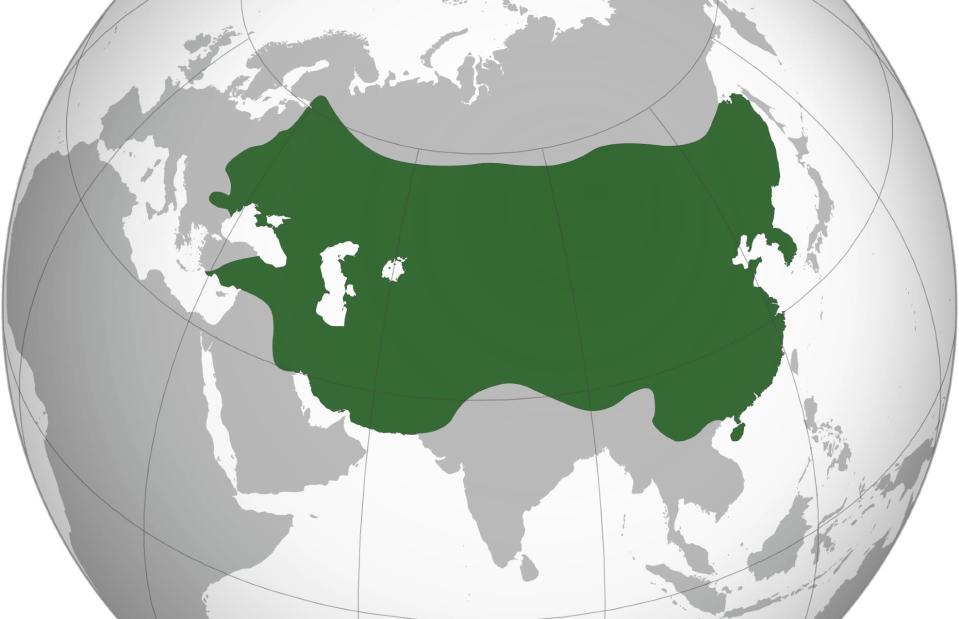
Ali Zifan/Wikimedia Commons/CC BY-SA 4.0
The largest contiguous empire the world has ever seen, the Mongol Empire stretched from Europe in the west to the Sea of Japan in the east, and from the Arctic Circle down to the Indian subcontinent. The empire reached its greatest extent in 1279 when Kublai Khan completed the conquest of China. By that time the Mongols' famously efficient messenger-riders, who could supposedly cover around 200 miles (322km) a day, would take more than a month to travel from one end of the empire to the other.
2nd: The Mongol Empire, 9.27 million square miles
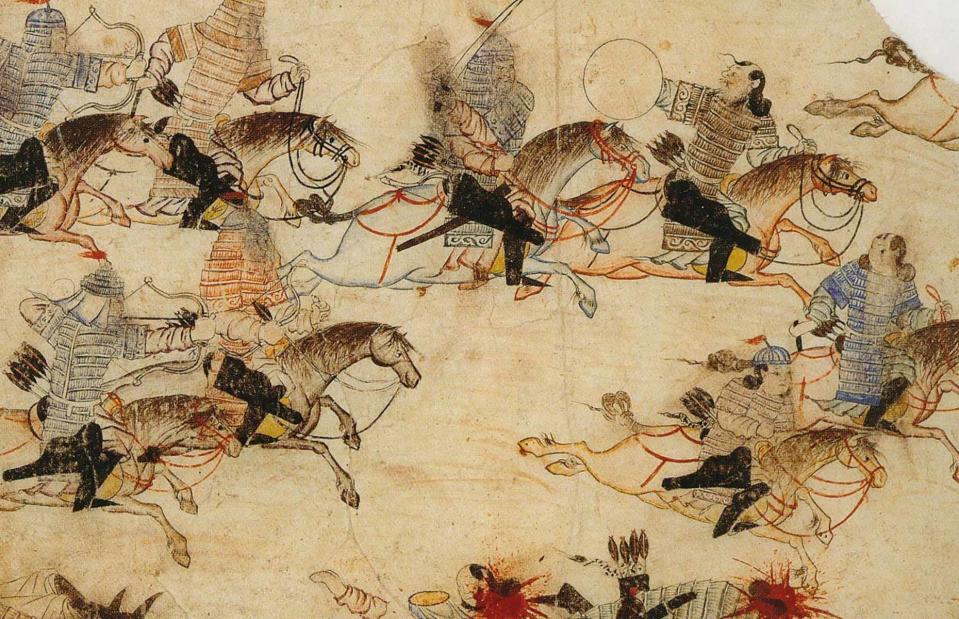
Staatsbibliothek Berlin/Schacht/Wikimedia Commons/Public domain
The sudden rise of the Mongols began when a warlord named Temujin united the nomadic tribes of the Mongolian Plateau and took on a new name: Genghis Khan. His military supremacy came thanks to his extremely mobile armies staffed by mounted warriors who were deadly with bows and arrows.
Enemies that did not submit were put down with extreme brutality, and the Mongols' ruthless reputation soon preceded them. Many smaller kingdoms chose to surrender rather than face the might of the Mongol horde.
2nd: The Mongol Empire, 9.27 million square miles
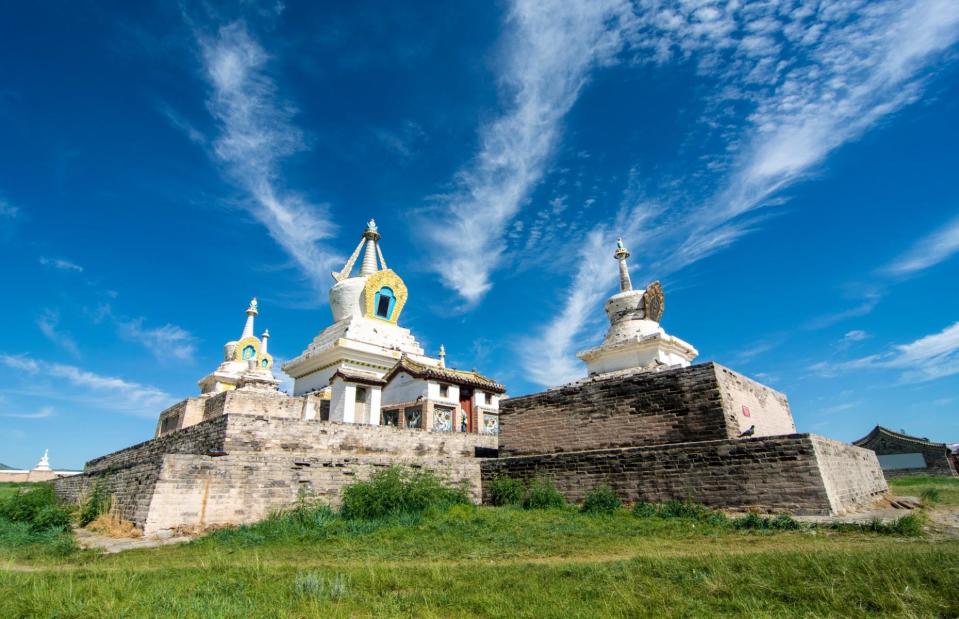
worldroadtrip/Shutterstock
The Mongol Empire began to fracture after the death of its fourth Great Khan, Mongke, in 1259. Different factions vied for control, and, although Genghis' grandson Kublai technically ruled as Great Khan until his death in 1294, the empire was already coming apart.
The empire would never again unite under a single ruler, and Karakorum, the grand capital of the Mongol Empire for just 50 years, soon fell into disrepair. It is now the site of Erdene Zuu Monastery (pictured) in central Mongolia.
1st: The British Empire, 13.71 million square miles
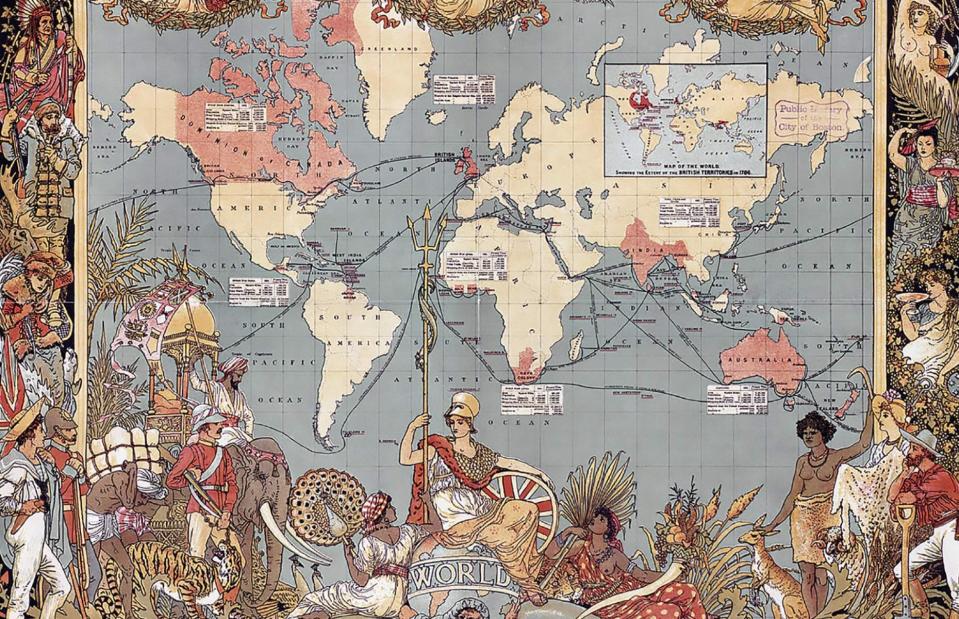
Pictorial Press Ltd/Alamy
The Victorians were proud of the British Empire, and many Victorian writers depicted their global dominion as a modernising force transmitting British values around the world. The reality was often very different, and when this map was produced in 1886 Britain was still annexing territory at a rapid rate.
Over the next three decades the British Empire took control of large swathes of Africa and reached its peak in 1920. At that time it covered around a quarter of the globe – the largest empire the world has ever seen.
1st: The British Empire, 13.71 million square miles
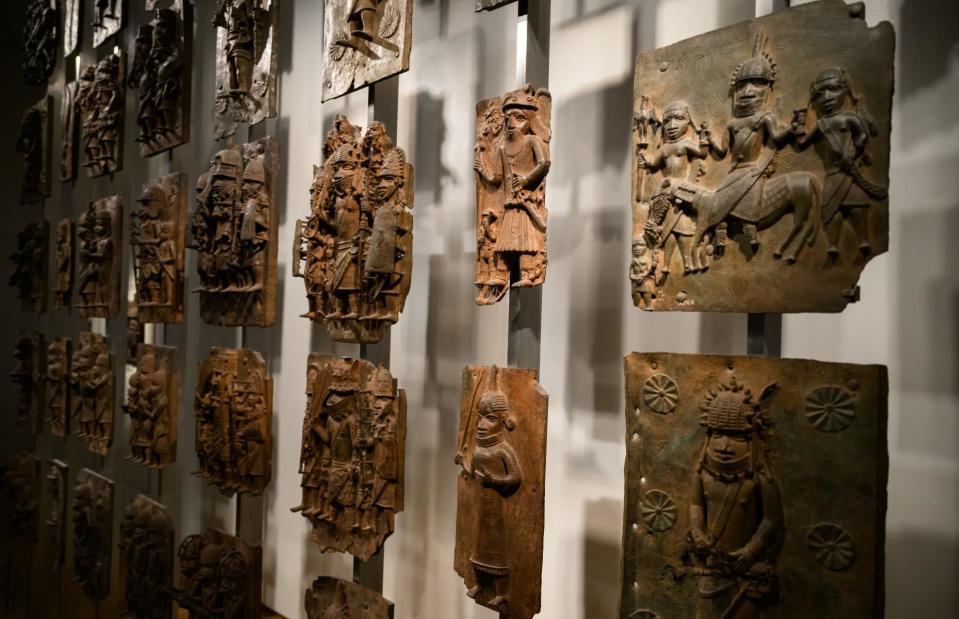
Leon Neal/Getty Images
The British Empire was built on the back of maritime supremacy on the high seas. Britain used the power of the Royal Navy to seize control of new lands and create a lucrative global trade network – often at the expense of these lands' inhabitants. Britain became rich partly by extracting natural resources and seizing valuable treasures like the Benin Bronzes, looted by British troops as they razed the royal palace of Benin in 1897.
1st: The British Empire, 13.71 million square miles
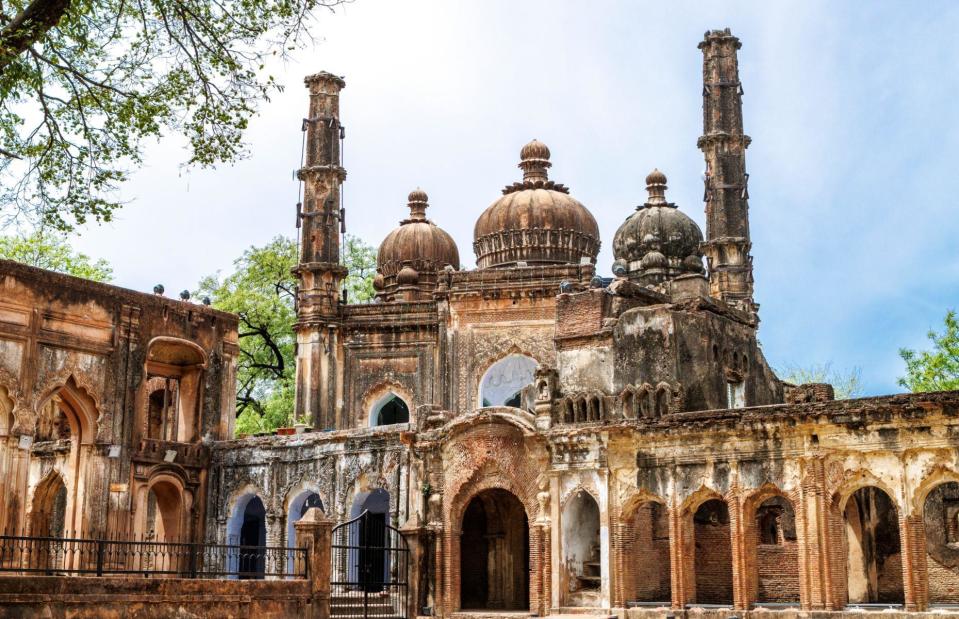
Jan Willem van Hofwegen/Shutterstock
World War II, which bankrupted Britain despite its victory, spelled the beginning of the end for British imperium. India became independent in 1947 following Mahatma Gandhi's famous nonviolent civil disobedience campaign, and by 1967 more than 20 former British territories were independent. Today, sites like the British Residency in Lucknow, India – once home to the British High Commissioner – are a crumbling reminder of a bygone age of imperial control.
Read on to discover the earliest photos ever taken in the UK


